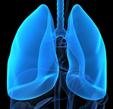Advertisment
Changes in smoking significantly impacts lung cancer mortality in the U.S. : 1975-2000

by Bruce Sylvester – Researchers report that, in the last quarter of the 20th century, changes in smoking behaviors have led to a significant drop in lung cancer mortality in the U.S., but lung cancer deaths averted are only a small fraction of deaths that could have been avoided if all smoking had ceased.
The findings were published on March 14 in the Journal of the National Cancer Institute.
To determine the effect of reduced tobacco smoking on lung cancer mortality in the U.S., Suresh H. Moolgavkar, M.D., Ph.D., of the Program in Biostatistics and Biomathematics at the Fred Hutchinson Cancer Research Center in Seattle, Washington and colleagues developed analytical models based on cohort, case-control, or registry data, and they used the data to estimate the number of lung cancer deaths prevented between 1975-2000.
The investigators distinguished the data by sex and birth-decade (1890-1970). The prevalence of smoking and lung cancer deaths were considered based on actual tobacco control, historical changes in smoking rates, no tobacco control, predicted smoking rates had there been no tobacco control, and complete tobacco control, which estimates the effects of what may have happened if all smoking had stopped in 1965.
They reported that in the United States between 1975 and 2000, there were 2,067,775 lung cancer deaths among men and 1,051,978 lung cancer deaths among women. The models predicted that 550,000 lung cancer deaths among men and 240,000 among women were averted by tobacco control efforts.
“The results of this article show the dramatic impact of the reduction in smoking associated with tobacco control efforts in the second half of the 20th century on lung cancer mortality during the period 1975-2000,” the researchers wrote.
They also noted limitations of the study, since the numbers don’t reflect the effects of non-cigarette forms of tobacco use. But they feel that, “continued implementation of evidence-based tobacco control policies, programs, and services remains the most promising approach to reducing the burden of lung cancer.”
In an accompanying editorial, Thomas J. Glynn, Ph.D., Director of Cancer Science and Trends and International Cancer Control at the American Cancer Society, said that smoke-free laws and regulations have protected millions against secondhand smoke at workplaces, public spaces, and even at home, as have treatments to help people quit smoking. “We should use all of the tools at our disposal to rein in the rogue tobacco industry, and assiduously apply all of our political, research, advocacy, public health, and clinical skills to end tobacco’s century of death, disease, and disability,” he added.





